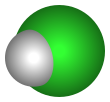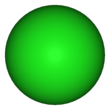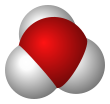Hydrochloric acid
| ||||||||||||||||||||||||||||||||||||||||||||||||||||||||||||||||||||||||||||||||||||||||||||||||||||||||||||||||||||||||||||||||||||||||||||||
| ||||||||||||||||||||||||||||||||||||||||||||||||||||||||||||||||||||||||||||||||||||||||||||||||||||||||||||||||||||||||||||||||||||||||||||||
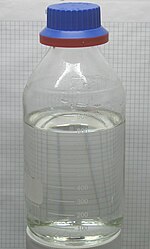 | ||||||||||||||||||||||||||||||||||||||||||||||||||||||||||||||||||||||||||||||||||||||||||||||||||||||||||||||||||||||||||||||||||||||||||||||
| Names | ||||||||||||||||||||||||||||||||||||||||||||||||||||||||||||||||||||||||||||||||||||||||||||||||||||||||||||||||||||||||||||||||||||||||||||||
|---|---|---|---|---|---|---|---|---|---|---|---|---|---|---|---|---|---|---|---|---|---|---|---|---|---|---|---|---|---|---|---|---|---|---|---|---|---|---|---|---|---|---|---|---|---|---|---|---|---|---|---|---|---|---|---|---|---|---|---|---|---|---|---|---|---|---|---|---|---|---|---|---|---|---|---|---|---|---|---|---|---|---|---|---|---|---|---|---|---|---|---|---|---|---|---|---|---|---|---|---|---|---|---|---|---|---|---|---|---|---|---|---|---|---|---|---|---|---|---|---|---|---|---|---|---|---|---|---|---|---|---|---|---|---|---|---|---|---|---|---|---|---|
Other names
| ||||||||||||||||||||||||||||||||||||||||||||||||||||||||||||||||||||||||||||||||||||||||||||||||||||||||||||||||||||||||||||||||||||||||||||||
| Identifiers | ||||||||||||||||||||||||||||||||||||||||||||||||||||||||||||||||||||||||||||||||||||||||||||||||||||||||||||||||||||||||||||||||||||||||||||||
CAS Number |
| |||||||||||||||||||||||||||||||||||||||||||||||||||||||||||||||||||||||||||||||||||||||||||||||||||||||||||||||||||||||||||||||||||||||||||||
ChEMBL |
| |||||||||||||||||||||||||||||||||||||||||||||||||||||||||||||||||||||||||||||||||||||||||||||||||||||||||||||||||||||||||||||||||||||||||||||
ChemSpider |
| |||||||||||||||||||||||||||||||||||||||||||||||||||||||||||||||||||||||||||||||||||||||||||||||||||||||||||||||||||||||||||||||||||||||||||||
ECHA InfoCard | 100.210.665 | |||||||||||||||||||||||||||||||||||||||||||||||||||||||||||||||||||||||||||||||||||||||||||||||||||||||||||||||||||||||||||||||||||||||||||||
EC Number | 231-595-7 | |||||||||||||||||||||||||||||||||||||||||||||||||||||||||||||||||||||||||||||||||||||||||||||||||||||||||||||||||||||||||||||||||||||||||||||
E number | E507 (acidity regulators, ...) | |||||||||||||||||||||||||||||||||||||||||||||||||||||||||||||||||||||||||||||||||||||||||||||||||||||||||||||||||||||||||||||||||||||||||||||
PubChem CID |
| |||||||||||||||||||||||||||||||||||||||||||||||||||||||||||||||||||||||||||||||||||||||||||||||||||||||||||||||||||||||||||||||||||||||||||||
UNII |
| |||||||||||||||||||||||||||||||||||||||||||||||||||||||||||||||||||||||||||||||||||||||||||||||||||||||||||||||||||||||||||||||||||||||||||||
UN number | 1789 | |||||||||||||||||||||||||||||||||||||||||||||||||||||||||||||||||||||||||||||||||||||||||||||||||||||||||||||||||||||||||||||||||||||||||||||
| Properties | ||||||||||||||||||||||||||||||||||||||||||||||||||||||||||||||||||||||||||||||||||||||||||||||||||||||||||||||||||||||||||||||||||||||||||||||
Chemical formula | HCl(aq) | |||||||||||||||||||||||||||||||||||||||||||||||||||||||||||||||||||||||||||||||||||||||||||||||||||||||||||||||||||||||||||||||||||||||||||||
| Appearance | Colorless, transparent liquid | |||||||||||||||||||||||||||||||||||||||||||||||||||||||||||||||||||||||||||||||||||||||||||||||||||||||||||||||||||||||||||||||||||||||||||||
Melting point | Concentration dependent - see table | |||||||||||||||||||||||||||||||||||||||||||||||||||||||||||||||||||||||||||||||||||||||||||||||||||||||||||||||||||||||||||||||||||||||||||||
Boiling point | Concentration dependent - see table | |||||||||||||||||||||||||||||||||||||||||||||||||||||||||||||||||||||||||||||||||||||||||||||||||||||||||||||||||||||||||||||||||||||||||||||
log P | 0.00[3] | |||||||||||||||||||||||||||||||||||||||||||||||||||||||||||||||||||||||||||||||||||||||||||||||||||||||||||||||||||||||||||||||||||||||||||||
Acidity (pKa) | −5.9 (HCl gas)[4] | |||||||||||||||||||||||||||||||||||||||||||||||||||||||||||||||||||||||||||||||||||||||||||||||||||||||||||||||||||||||||||||||||||||||||||||
| Pharmacology | ||||||||||||||||||||||||||||||||||||||||||||||||||||||||||||||||||||||||||||||||||||||||||||||||||||||||||||||||||||||||||||||||||||||||||||||
ATC code | A09AB03 (WHO) B05XA13 (WHO) | |||||||||||||||||||||||||||||||||||||||||||||||||||||||||||||||||||||||||||||||||||||||||||||||||||||||||||||||||||||||||||||||||||||||||||||
| Hazards | ||||||||||||||||||||||||||||||||||||||||||||||||||||||||||||||||||||||||||||||||||||||||||||||||||||||||||||||||||||||||||||||||||||||||||||||
Safety data sheet | See: data page | |||||||||||||||||||||||||||||||||||||||||||||||||||||||||||||||||||||||||||||||||||||||||||||||||||||||||||||||||||||||||||||||||||||||||||||
GHS pictograms |   | |||||||||||||||||||||||||||||||||||||||||||||||||||||||||||||||||||||||||||||||||||||||||||||||||||||||||||||||||||||||||||||||||||||||||||||
GHS signal word | Danger[5] | |||||||||||||||||||||||||||||||||||||||||||||||||||||||||||||||||||||||||||||||||||||||||||||||||||||||||||||||||||||||||||||||||||||||||||||
GHS hazard statements | H290, H314, H335[5] | |||||||||||||||||||||||||||||||||||||||||||||||||||||||||||||||||||||||||||||||||||||||||||||||||||||||||||||||||||||||||||||||||||||||||||||
GHS precautionary statements | P260, P280, P303+361+353, P305+351+338[5] | |||||||||||||||||||||||||||||||||||||||||||||||||||||||||||||||||||||||||||||||||||||||||||||||||||||||||||||||||||||||||||||||||||||||||||||
NFPA 704 | | Related compounds | Related compounds
Supplementary data page Structure and properties Refractive index (n), Dielectric constant (εr), etc. Thermodynamic data Phase behaviour solid–liquid–gas Spectral data UV, IR, NMR, MS Except where otherwise noted, data are given for materials in their standard state (at 25 °C [77 °F], 100 kPa). Infobox references Hydrochloric acid is a colorless inorganic chemical system with the formula H Hydrochloric acid is the simplest chlorine-based acid system containing water. It is a solution of hydrogen chloride and water, and a variety of other chemical species, including hydronium and chloride ions. It is an important chemical reagent and industrial chemical, used primarily in the production of polyvinyl chloride for plastic. In households, diluted hydrochloric acid is often used as a descaling agent. In the food industry, hydrochloric acid is used as a food additive and in the production of gelatin. Hydrochloric acid is also used in leather processing. Hydrochloric acid was discovered by the alchemist Jabir ibn Hayyan around the year 800 AD.[6][7] Contents
| ||||||||||||||||||||||||||||||||||||||||||||||||||||||||||||||||||||||||||||||||||||||||||||||||||||||||||||||||||||||||||||||||||||||||||||
Concentration | Density | Molarity | pH | Viscosity | Specific heat | Vapour pressure | Boiling point | Melting point | ||
|---|---|---|---|---|---|---|---|---|---|---|
| kg HCl/kg | kg HCl/m3 | Baumé | kg/L | mol/L | mPa·s | kJ/(kg·K) | kPa | °C | °C | |
| 10% | 104.80 | 6.6 | 1.048 | 2.87 | −0.5 | 1.16 | 3.47 | 1.95 | 103 | −18 |
| 20% | 219.60 | 13 | 1.098 | 6.02 | −0.8 | 1.37 | 2.99 | 1.40 | 108 | −59 |
| 30% | 344.70 | 19 | 1.149 | 9.45 | −1.0 | 1.70 | 2.60 | 2.13 | 90 | −52 |
| 32% | 370.88 | 20 | 1.159 | 10.17 | −1.0 | 1.80 | 2.55 | 3.73 | 84 | −43 |
| 34% | 397.46 | 21 | 1.169 | 10.90 | −1.0 | 1.90 | 2.50 | 7.24 | 71 | −36 |
| 36% | 424.44 | 22 | 1.179 | 11.64 | −1.1 | 1.99 | 2.46 | 14.5 | 61 | −30 |
| 38% | 451.82 | 23 | 1.189 | 12.39 | −1.1 | 2.10 | 2.43 | 28.3 | 48 | −26 |
| The reference temperature and pressure for the above table are 20 °C and 1 atmosphere (101.325 kPa). Vapour pressure values are taken from the International Critical Tables and refer to the total vapour pressure of the solution. | ||||||||||

Melting temperature as a function of HCl concentration in water[35][36]
Physical properties of hydrochloric acid, such as boiling and melting points, density, and pH, depend on the concentration or molarity of HCl in the aqueous solution. They range from those of water at very low concentrations approaching 0% HCl to values for fuming hydrochloric acid at over 40% HCl.[29][30][37]
Hydrochloric acid as the binary (two-component) mixture of HCl and H2O has a constant-boiling azeotrope at 20.2% HCl and 108.6 °C (227 °F). There are four constant-crystallization eutectic points for hydrochloric acid, between the crystal form of HCl·H2O (68% HCl), HCl·2H2O (51% HCl), HCl·3H2O (41% HCl), HCl·6H2O (25% HCl), and ice (0% HCl). There is also a metastable eutectic point at 24.8% between ice and the HCl·3H2O crystallization.[37]
Production
Hydrochloric acid is prepared by dissolving hydrogen chloride in water. Hydrogen chloride can be generated in many ways, and thus several precursors to hydrochloric acid exist. The large-scale production of hydrochloric acid is almost always integrated with the industrial scale production of other chemicals.
Industrial market
Hydrochloric acid is produced in solutions up to 38% HCl (concentrated grade). Higher concentrations up to just over 40% are chemically possible, but the evaporation rate is then so high that storage and handling require extra precautions, such as pressurization and cooling. Bulk industrial-grade is therefore 30% to 35%, optimized to balance transport efficiency and product loss through evaporation. In the United States, solutions of between 20% and 32% are sold as muriatic acid. Solutions for household purposes in the US, mostly cleaning, are typically 10% to 12%, with strong recommendations to dilute before use. In the United Kingdom, where it is sold as "Spirits of Salt" for domestic cleaning, the potency is the same as the US industrial grade.[14] In other countries, such as Italy, hydrochloric acid for domestic or industrial cleaning is sold as "Acido Muriatico", and its concentration ranges from 5% to 32%.
Major producers worldwide include Dow Chemical at 2 million metric tons annually (2 Mt/year), calculated as HCl gas, Georgia Gulf Corporation, Tosoh Corporation, Akzo Nobel, and Tessenderlo at 0.5 to 1.5 Mt/year each. Total world production, for comparison purposes expressed as HCl, is estimated at 20 Mt/year, with 3 Mt/year from direct synthesis, and the rest as secondary product from organic and similar syntheses. By far, most hydrochloric acid is consumed captively by the producer. The open world market size is estimated at 5 Mt/year.[14]
Applications
Hydrochloric acid is a strong inorganic acid that is used in many industrial processes such as refining metal. The application often determines the required product quality.[14]
Pickling of steel
One of the most important applications of hydrochloric acid is in the pickling of steel, to remove rust or iron oxide scale from iron or steel before subsequent processing, such as extrusion, rolling, galvanizing, and other techniques.[14][27] Technical quality HCl at typically 18% concentration is the most commonly used pickling agent for the pickling of carbon steel grades.
- Fe2O3 + Fe + 6 HCl ⟶ 3 FeCl2 +3 H2Odisplaystyle mathrm Fe_2O_3 + Fe + 6 HCl longrightarrow 3 FeCl_2 +3 H_2O
- Fe2O3 + Fe + 6 HCl ⟶ 3 FeCl2 +3 H2Odisplaystyle mathrm Fe_2O_3 + Fe + 6 HCl longrightarrow 3 FeCl_2 +3 H_2O
The spent acid has long been reused as iron(II) chloride (also known as ferrous chloride) solutions, but high heavy-metal levels in the pickling liquor have decreased this practice.
The steel pickling industry has developed hydrochloric acid regeneration processes, such as the spray roaster or the fluidized bed HCl regeneration process, which allow the recovery of HCl from spent pickling liquor. The most common regeneration process is the pyrohydrolysis process, applying the following formula:[14]
- 4 FeCl2 + 4 H2O + O2 ⟶ 8 HCl +2 Fe2O3displaystyle mathrm 4 FeCl_2 + 4 H_2O + O_2 longrightarrow 8 HCl +2 Fe_2O_3
- 4 FeCl2 + 4 H2O + O2 ⟶ 8 HCl +2 Fe2O3displaystyle mathrm 4 FeCl_2 + 4 H_2O + O_2 longrightarrow 8 HCl +2 Fe_2O_3
By recuperation of the spent acid, a closed acid loop is established.[27] The iron(III) oxide by-product of the regeneration process is valuable, used in a variety of secondary industries.[14]
Production of organic compounds
Another major use of hydrochloric acid is in the production of organic compounds, such as vinyl chloride and dichloroethane for PVC. This is often captive use, consuming locally produced hydrochloric acid that never actually reaches the open market. Other organic compounds produced with hydrochloric acid include bisphenol A for polycarbonate, activated carbon, and ascorbic acid, as well as numerous pharmaceutical products.[27]
2 H2C=CH2 + 4 HCl + O2 ⟶ 2 ClCH2CH2Cl + 2 H2Odisplaystyle mathrm 2 H_2C=CH_2 + 4 HCl + O_2 longrightarrow 2 ClCH_2CH_2Cl + 2 H_2O(dichloroethane by oxychlorination)
Production of inorganic compounds
Numerous products can be produced with hydrochloric acid in normal acid-base reactions, resulting in inorganic compounds. These include water treatment chemicals such as iron(III) chloride and polyaluminium chloride (PAC).
Fe2O3 + 6 HCl ⟶ 2 FeCl3 + 3 H2Odisplaystyle mathrm Fe_2O_3 + 6 HCl longrightarrow 2 FeCl_3 + 3 H_2O(iron(III) chloride from magnetite)
Both iron(III) chloride and PAC are used as flocculation and coagulation agents in sewage treatment, drinking water production, and paper production.
Other inorganic compounds produced with hydrochloric acid include road application salt calcium chloride, nickel(II) chloride for electroplating, and zinc chloride for the galvanizing industry and battery production.[27]
CaCO3 + 2 HCl ⟶ CaCl2 + CO2 + H2Odisplaystyle mathrm CaCO_3 + 2 HCl longrightarrow CaCl_2 + CO_2 + H_2O(calcium chloride from limestone)
pH control and neutralization
Hydrochloric acid can be used to regulate the acidity (pH) of solutions.
- OH− + HCl ⟶ H2O + Cl−displaystyle mathrm OH^- + HCl longrightarrow H_2O + Cl^-
- OH− + HCl ⟶ H2O + Cl−displaystyle mathrm OH^- + HCl longrightarrow H_2O + Cl^-
In industry demanding purity (food, pharmaceutical, drinking water), high-quality hydrochloric acid is used to control the pH of process water streams. In less-demanding industry, technical quality hydrochloric acid suffices for neutralizing waste streams and swimming pool pH control.[27]
Regeneration of ion exchangers
High-quality hydrochloric acid is used in the regeneration of ion exchange resins. Cation exchange is widely used to remove ions such as Na+ and Ca2+ from aqueous solutions, producing demineralized water. The acid is used to rinse the cations from the resins.[14] Na+ is replaced with H+ and Ca2+ with 2 H+.
Ion exchangers and demineralized water are used in all chemical industries, drinking water production, and many food industries.[14]
Other
Hydrochloric acid is used for a large number of small-scale applications, such as leather processing, purification of common salt, household cleaning,[38] and building construction.[27]Oil production may be stimulated by injecting hydrochloric acid into the rock formation of an oil well, dissolving a portion of the rock, and creating a large-pore structure. Oil well acidizing is a common process in the North Sea oil production industry.[14]
Hydrochloric acid has been used for dissolving calcium carbonate, i.e. such things as de-scaling kettles and for cleaning mortar off brickwork, but it is a hazardous liquid which must be used with care. When used on brickwork the reaction with the mortar only continues until the acid has all been converted, producing calcium chloride, carbon dioxide, and water:
- CaCO3 + 2 HCl ⟶ CaCl2 + CO2 + H2Odisplaystyle mathrm CaCO_3 + 2 HCl longrightarrow CaCl_2 + CO_2 + H_2O
- CaCO3 + 2 HCl ⟶ CaCl2 + CO2 + H2Odisplaystyle mathrm CaCO_3 + 2 HCl longrightarrow CaCl_2 + CO_2 + H_2O
Many chemical reactions involving hydrochloric acid are applied in the production of food, food ingredients, and food additives. Typical products include aspartame, fructose, citric acid, lysine, hydrolyzed vegetable protein as food enhancer, and in gelatin production. Food-grade (extra-pure) hydrochloric acid can be applied when needed for the final product.[14][27]
Presence in living organisms

Diagram of alkaline mucous layer in stomach with mucosal defense mechanisms
Gastric acid is one of the main secretions of the stomach. It consists mainly of hydrochloric acid and acidifies the stomach content to a pH of 1 to 2.[39][40]
Chloride (Cl−) and hydrogen (H+) ions are secreted separately in the stomach fundus region at the top of the stomach by parietal cells of the gastric mucosa into a secretory network called canaliculi before it enters the stomach lumen.[41]
Gastric acid acts as a barrier against microorganisms to prevent infections and is important for the digestion of food. Its low pH denatures proteins and thereby makes them susceptible to degradation by digestive enzymes such as pepsin. The low pH also activates the enzyme precursor pepsinogen into the active enzyme pepsin by self-cleavage. After leaving the stomach, the hydrochloric acid of the chyme is neutralized in the duodenum by sodium bicarbonate.[39]
The stomach itself is protected from the strong acid by the secretion of a thick mucus layer, and by secretin induced buffering with sodium bicarbonate. Heartburn or peptic ulcers can develop when these mechanisms fail. Drugs of the antihistaminic and proton pump inhibitor classes can inhibit the production of acid in the stomach, and antacids are used to neutralize excessive existing acid.[39][42]
Safety
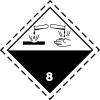

| Concentration by weight | Classification[43] | R-Phrases |
|---|---|---|
| 10–25% | Irritant (Xi) | R36/37/38 |
| > 25% | Corrosive (C) | R34 R37 |
Concentrated hydrochloric acid (fuming hydrochloric acid) forms acidic mists. Both the mist and the solution have a corrosive effect on human tissue, with the potential to damage respiratory organs, eyes, skin, and intestines irreversibly. Upon mixing hydrochloric acid with common oxidizing chemicals, such as sodium hypochlorite (bleach, NaClO) or potassium permanganate (KMnO4), the toxic gas chlorine is produced.
- NaClO +2 HCl ⟶ H2O + NaCl + Cl2displaystyle mathrm NaClO +2 HCl longrightarrow H_2O + NaCl + Cl_2
- NaClO +2 HCl ⟶ H2O + NaCl + Cl2displaystyle mathrm NaClO +2 HCl longrightarrow H_2O + NaCl + Cl_2
- 2 KMnO4 + 16 HCl ⟶ 2 MnCl2 + 8 H2O + 2 KCl + 5 Cl2displaystyle mathrm 2 KMnO_4 + 16 HCl longrightarrow 2 MnCl_2 + 8 H_2O + 2 KCl + 5 Cl_2
- 2 KMnO4 + 16 HCl ⟶ 2 MnCl2 + 8 H2O + 2 KCl + 5 Cl2displaystyle mathrm 2 KMnO_4 + 16 HCl longrightarrow 2 MnCl_2 + 8 H_2O + 2 KCl + 5 Cl_2
- PbO2 + 4 HCl ⟶ PbCl2 + Cl2 + 2 H2Odisplaystyle mathrm PbO_2 + 4 HCl longrightarrow PbCl_2 + Cl_2 + 2 H_2O
- PbO2 + 4 HCl ⟶ PbCl2 + Cl2 + 2 H2Odisplaystyle mathrm PbO_2 + 4 HCl longrightarrow PbCl_2 + Cl_2 + 2 H_2O
Personal protective equipment such as latex gloves, protective eye goggles, and chemical-resistant clothing and shoes will minimize risks when handling hydrochloric acid. The United States Environmental Protection Agency rates and regulates hydrochloric acid as a toxic substance.[44]
The UN number or DOT number is 1789. This number will be displayed on a placard on the container.
See also
Chloride, inorganic salts of hydrochloric acid
Hydrochloride, organic salts of hydrochloric acid- Aqua regia
References
^ ab "Hydrochloric Acid". Archived from the original on 15 October 2010. Retrieved 16 September 2010..mw-parser-output cite.citationfont-style:inherit.mw-parser-output qquotes:"""""""'""'".mw-parser-output code.cs1-codecolor:inherit;background:inherit;border:inherit;padding:inherit.mw-parser-output .cs1-lock-free abackground:url("//upload.wikimedia.org/wikipedia/commons/thumb/6/65/Lock-green.svg/9px-Lock-green.svg.png")no-repeat;background-position:right .1em center.mw-parser-output .cs1-lock-limited a,.mw-parser-output .cs1-lock-registration abackground:url("//upload.wikimedia.org/wikipedia/commons/thumb/d/d6/Lock-gray-alt-2.svg/9px-Lock-gray-alt-2.svg.png")no-repeat;background-position:right .1em center.mw-parser-output .cs1-lock-subscription abackground:url("//upload.wikimedia.org/wikipedia/commons/thumb/a/aa/Lock-red-alt-2.svg/9px-Lock-red-alt-2.svg.png")no-repeat;background-position:right .1em center.mw-parser-output .cs1-subscription,.mw-parser-output .cs1-registrationcolor:#555.mw-parser-output .cs1-subscription span,.mw-parser-output .cs1-registration spanborder-bottom:1px dotted;cursor:help.mw-parser-output .cs1-hidden-errordisplay:none;font-size:100%.mw-parser-output .cs1-visible-errorfont-size:100%.mw-parser-output .cs1-subscription,.mw-parser-output .cs1-registration,.mw-parser-output .cs1-formatfont-size:95%.mw-parser-output .cs1-kern-left,.mw-parser-output .cs1-kern-wl-leftpadding-left:0.2em.mw-parser-output .cs1-kern-right,.mw-parser-output .cs1-kern-wl-rightpadding-right:0.2em
^ "spirits of salt". Retrieved 29 May 2012.
^ "Hydrochloric acid_msds".
^ Trummal, Aleksander; Lipping, Lauri; Kaljurand, Ivari; Koppel, Ilmar A.; Leito, Ivo (2016-05-06). "Acidity of Strong Acids in Water and Dimethyl Sulfoxide". The Journal of Physical Chemistry A. 120 (20): 3663–3669. doi:10.1021/acs.jpca.6b02253. ISSN 1089-5639. PMID 27115918.
^ abc Sigma-Aldrich Co., Hydrochloric acid. Retrieved on 2017-11-29.
^ "Human Metabolome Database: Showing metabocard for Hydrochloric acid (HMDB0002306)". www.hmdb.ca. Retrieved 2017-11-04.
^ Pubchem. "hydrochloric acid". pubchem.ncbi.nlm.nih.gov. Retrieved 2017-11-04.
^ "Muriatic Acid" (pdf). PPG Industries. 2005. Retrieved 10 September 2010.
^ Gay-Lussac (1814) "Mémoire sur l'iode" (Memoir on iodine), Annales de Chemie, 91 : 5–160. From page 9: " … mais pour les distinguer, je propose d'ajouter au mot spécifique de l'acide que l'on considère, le mot générique de hydro ; de sorte que le combinaisons acide de hydrogène avec le chlore, l'iode, et le soufre porteraient le nom d'acide hydrochlorique, d'acide hydroiodique, et d'acide hydrosulfurique ; … " ( … but in order to distinguish them, I propose to add to the specific suffix of the acid being considered, the general prefix hydro, so that the acidic combinations of hydrogen with chlorine, iodine, and sulfur will bear the name hydrochloric acid, hydroiodic acid, and hydrosulfuric acid ; … )
^ "Human Metabolome Database: Showing metabocard for Hydrochloric acid (HMDB0002306)". www.hmdb.ca. Retrieved 2017-11-04.
^ Pubchem. "hydrochloric acid". pubchem.ncbi.nlm.nih.gov. Retrieved 2017-11-04.
^ Bauer, Hugo (2009). A history of chemistry. BiblioBazaar, LLC. p. 31. ISBN 978-1-103-35786-4.
^ Karpenko, V.; Norris, J.A. (2001). "Vitriol in the history of chemistry" (PDF). Chem. Listy. 96: 997.
^ abcdefghijklm "Hydrochloric Acid". Chemicals Economics Handbook. SRI International. 2001. pp. 733.4000A–733.3003F.
^ Norton, S. (2008). "A Brief History of Potable Gold". Molecular Interventions. 8 (3): 120–3. doi:10.1124/mi.8.3.1. PMID 18693188.
^ Thompson, C. J. S. (2002). "Alchemy and Alchemists" (Reprint of the edition published by George G. Harrap and Co., London, 1932 ed.). Dover Publications, Inc., Mineola, NY: 61, 18.
^ ab Forbes, Robert James (1970). A short history of the art of distillation: from the beginnings up to the death of Cellier Blumenthal. BRILL. ISBN 978-90-04-00617-1.
^ Myers, R. L. (2007). The 100 most important chemical compounds: a reference guide. Greenwood Publishing Group. p. 141. ISBN 978-0-313-33758-1.
^ Datta, N. C. (2005). The story of chemistry. Universities Press. p. 40. ISBN 978-81-7371-530-3.
^ Pereira, Jonathan (1854). The elements of materia medica and therapeutics, Volume 1. Longman, Brown, Green, and Longmans. p. 387.
^ Leicester, Henry Marshall (1971). The historical background of chemistry. Courier Dover Publications. p. 99. ISBN 978-0-486-61053-5. Retrieved 19 August 2010.
^ Waite, A. E. (1992). Secret Tradition in Alchemy (public document ed.). Kessinger Publishing.
^ Von Meyer, Ernst Sigismund (1891). A History of Chemistry from Earliest Times to the Present Day. London, New York, Macmillan. p. 51.
^ Priestley, Joseph (1772). "Observations on different kinds of air [i.e., gases]". Philosophical Transactions of the Royal Society of London. 62: 147–264 (234–244). doi:10.1098/rstl.1772.0021.
^ Davy, Humphry (1808). "Electro-chemical researches, on the decomposition of the earths; with observations on the metals obtained from the alkaline earths, and on the amalgam procured from ammonia". Philosophical Transactions of the Royal Society of London. 98: 333–370. doi:10.1098/rstl.1808.0023.p. 343: When potassium was heated in muriatic acid gas [i.e., gaseous hydrogen chloride], as dry as it could be obtained by common chemical means, there was a violent chemical action with ignition; and when the potassium was in sufficient quantity, the muriatic acid gas wholly disappeared, and from one-third to one-fourth of its volume of hydrogene was evolved, and muriate of potash [i.e., potassium chloride] was formed. (The reaction was: 2HCl + 2K → 2KCl + H2)
^ ab Aftalion, Fred (1991). A History of the International Chemical Industry. Philadelphia: University of Pennsylvania Press. ISBN 978-0-8122-1297-6.
^ abcdefgh Greenwood, Norman N.; Earnshaw, Alan (1997). Chemistry of the Elements (2nd ed.). Butterworth-Heinemann. pp. 946–48. ISBN 0-08-037941-9.
^ "List of precursors and chemicals frequently used in the illicit manufacture of narcotic drugs and psychotropic substances under international control" (PDF) (Annex to Form D ("Red List")) (Eleventh ed.). International Narcotics Control Board. January 2007. Archived from the original (PDF) on 2008-02-27.
^ abcd Lide, David (2000). CRC Handbook of Chemistry and Physics (81st ed.). CRC Press. ISBN 978-0-8493-0481-1.
^ abcd Perry, R.; Green D.; Maloney J. (1984). Perry's Chemical Engineers' Handbook (6th ed.). McGraw-Hill Book Company. ISBN 978-0-07-049479-4.
^ Agmon, Noam (January 1998). "Structure of Concentrated HCl Solutions". The Journal of Physical Chemistry A. 102 (1): 192–199. CiteSeerX 10.1.1.78.3695. doi:10.1021/jp970836x. ISSN 1089-5639.
^ Trummal, Aleksander; Lipping, Lauri; Kaljurand, Ivari; Koppel, Ilmar A.; Leito, Ivo (2016-05-06). "Acidity of Strong Acids in Water and Dimethyl Sulfoxide". The Journal of Physical Chemistry A. 120 (20): 3663–3669. doi:10.1021/acs.jpca.6b02253. ISSN 1089-5639. PMID 27115918.
^ McCarty, Christopher G.; Vitz, Ed (May 2006). "pH Paradoxes: Demonstrating That It Is Not True That pH ≡ -log[H+]". Journal of Chemical Education. 83 (5): 752. doi:10.1021/ed083p752. ISSN 0021-9584.
^ Mendham, J.; Denney, R. C.; Barnes, J. D.; Thomas, M.J.K.; Denney, R. C.; Thomas, M. J. K. (2000). Vogel's Quantitative Chemical Analysis (6th ed.). New York: Prentice Hall. ISBN 978-0-582-22628-9.
^ "Systemnummer 6 Chlor". Gmelins Handbuch der Anorganischen Chemie. Chemie Berlin. 1927.
^ "Systemnummer 6 Chlor, Ergänzungsband Teil B – Lieferung 1". Gmelins Handbuch der Anorganischen Chemie. Chemie Weinheim. 1968.
^ ab Aspen Properties. binary mixtures modeling software (calculations by Akzo Nobel Engineering ed.). Aspen Technology. 2002–2003.
^ Simhon, Rachel (13 September 2003). "Household plc: really filthy bathroom". The Daily Telegraph. London. Retrieved 31 March 2010.
^ abc Maton, Anthea; Jean Hopkins; Charles William McLaughlin; Susan Johnson; Maryanna Quon Warner; David LaHart; Jill D. Wright (1993). Human Biology and Health. Englewood Cliffs, New Jersey, USA: Prentice Hall. ISBN 978-0-13-981176-0.
^ Haas, Elson. "Digestive Aids:Hydrochloric acid". healthy.net.
^ Arthur, C.; Guyton, M. D.; Hall, John E. (2000). Textbook of Medical Physiology (10th ed.). W.B. Saunders Company. ISBN 978-0-7216-8677-6.
^ Bowen, R. (18 March 2003). "Control and Physiologic Effects of Secretin". Colorado State University. Retrieved 16 March 2009.
^ "Council Directive 67/548/EEC of 27 June 1967 on the approximation of laws, regulations and administrative provisions relating to the classification, packaging and labelling of dangerous substances". EUR-lex. Retrieved 2 September 2008.
^ "HCl score card". United States Environmental Protection Agency. Retrieved 12 September 2007.
External links
| Wikimedia Commons has media related to Hydrochloric acid. |
Listen to this article (info/dl)
Hydrogen chloride (chemical compound) at Encyclopædia Britannica- NIST WebBook, general link
Hydrochloric Acid – Part One and Hydrochloric Acid – Part Two at The Periodic Table of Videos (University of Nottingham)- Calculators: surface tensions, and densities, molarities and molalities of aqueous HCl
- General safety information
- EPA Hazard Summary
- Hydrochloric acid MSDS by Georgia Institute of Technology
- NIOSH Pocket Guide to Chemical Hazards
- Pollution information
- National Pollutant Inventory – Hydrochloric Acid Fact Sheet
